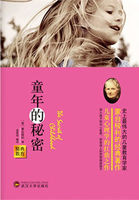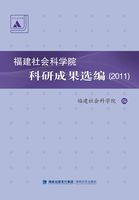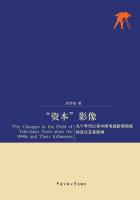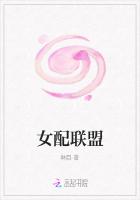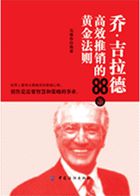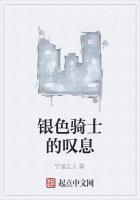“The three dimensions of Curtis circulation-large numbers,quality homes,and superior attention-enable a manufacturer through the pages of the Curtis publications to shape the thoughts of readers and dealers,and through them,of the masses who imitate,”Parlin wrote.In other words,Curtis publications didn't reach everyone,but they did reach the right people.For Curtis,that meant readers who had influence in the community and who considered advertised products to be of higher quality.“An Agricultural Trading Center:A report on some facts of national significance gleaned in a survey of Sabetha,Kansas,”1920,CP,Box 63.
In 1913,Curtis Publishing told its advertisers that magazine circulation had three key elements:the appeal of its editorial matter;the manner in which the publication was sold;and the standard to which the advertisements were held.Selling Forces,pp.217-218.By 1920,Charles Coolidge Parlin,manager of the company's Division of Commercial Research,had revised that formula.
Magazine circulation still had three facets.Parlin likened it to a cube,with the three dimensions made up of the size of the circulation,the wealth of the readers,and the attention that readers gave the publication.“An Agricultural Trading Center,”p.56;“The Public Ledger Report,”Vol.B.
The new theme was similar to the old,but reflected the growing recognition and importance of readers.Readers no longer provided the primary means of monetary support for a publication,but they provided something far more important for a twentieth century publisher:a mass market.Through its research,Curtis shaped the image of its audience to be most appealing to manufacturers of consumer goods.It stripped the individuality from the readers of its magazines,reducing them to composite statistics of income,education and location-characteristics intended to portray them as eager buyers.
In its research and in its promotional material,Curtis Publishing portrayed its magazines as both“mass”and“class”publications.That is,to companies such as soap manufacturers,which wanted to reach as wide an audience as possible,Curtis could stress the millions of readers its magazines reached-the largest audiences available during the first four decades of the twentieth century.See Selling Forces,pp.210-218.To the makers of pianos or automobiles,who had fewer products to sell and who needed to reach people with money,Curtis stressed the“quality”of its circulation-an affluent group of readers who paid full price for the magazines,responded to advertising and bought brand-name products.In both cases,it used readership studies and statistics from Commercial Research and the federal government to try to prove to manufacturers and advertising agencies that Curtis publications were the best medium for their advertising dollars because they reached the people most likely to buy.In doing so,it carved a niche in the mass market while maintaining its reputation as the publisher of the pre-eminent mass-market periodicals.
Readership research emerged during the budding consumer culture of the early twentieth century,and the commercial values that developed during that era helped shape publications'perceptions of readers.Although magazines and newspapers today try to distance decisions about editorial matter from the outward commercialism of advertising and circulation,the ties are as inextricable as they were at the turn of the century.
Practical handbooks and trade journals tell editors to think of the reader.Editors encourage reporters to write for the reader.Today,with readership dwindling,“reader-friendly”has become a buzzword for an amorphous list of content,design and writing characteristics that every newspaper and magazine is encouraged to follow.Newspapers and magazines alike rely on readership research to learn about their shortcomings and to shape and target content to such groups as“occasional readers,”“potential readers”and“non-readers.”The wants of the reader have become one of the guiding principals-if not the guiding principal-of late-twentieth century journalism.Even as journalists attempt to distance themselves from their co-workers in the advertising department,though,they continue to follow practices and styles rooted in commercialism.The readership survey has been chief among them.Although such surveys have been used to help make decisions about news,the surveys themselves had their beginnings in advertising,among publishers like Curtis,who sought to enhance the value of their magazines and newspapers by providing detailed information about readership to their all-important advertisers.As readers increasingly became consumers,a publication's readership increasingly became a commodity-a product to be defined,studied and sold.
A Quantitative Analysis of U.S.Consumer Magazines:A Ten-Year Longitudinal Study of Transformation
美国消费期刊的定量分析:十年变化的纵向研究
David Abrahamson,Rebecca Lynn Bowman,Mark Richard Greer,William Brian Yeado
摘要:为了从历史的角度出发探究有关美国消费者期刊出版产业的一系列根本问题,本研究采用了十年前所使用的研究方法,即1990年的定量研究?毋庸置疑,一些行业经济商业参数,如,发行额的标准?定价和广告费等在过去的十年中发生了巨大的变化?期刊业对这些变化的反映不仅体现在多种经济压力——尤其是在这十年市场条件框架之内相关成本管理和利润最大化的问题——而且还体现在期刊能够继续反映美国社会当前社会文化现实方面?
Introduction
The purpose of this paper-a follow-up on a baseline 1990 quantitative study-is to examine a number of defining economic business parameters in magazine publishing(e.g.,circulation,cover price,advertising rates,etc.)and how they have changed over the last decade.It also explores the market-related causes of these changes as well as the periodical industry's management responses to them.In addition,it attempts to speculate on the ways in which these changes suggest magazines'unique role in reflecting the on-going sociocultural reality of American society.

